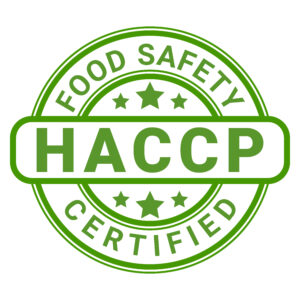What is a Quality Management System? (QMS)
June 30, 2025
From Barcodes to Intelligence: Why 2D Codes and RFID Are Taking Over
July 15, 2025Creating a HACCP (Hazard Analysis and Critical Control Points) plan may initially seem technical or even difficult, but once you understand its importance, it is actually a logical and necessary system for any business operator involved in food production. Whether you are a food business owner, a quality manager, or simply a food safety enthusiast, today Food Safety Alliance will introduce you to how to create a HACCP plan step by step.
What is a HACCP plan and why do you need it?

A HACCP plan is a structured approach for identifying, assessing, and controlling food safety hazards during the food production process. It’s not just a document — it’s a powerful prevention system that ensures food is produced in a safe environment with minimal risks.
The main hazards are:
- Biological: Bacteria, viruses, parasites (e.g., Salmonella, E. coli, Listeria).
- Chemical: Cleaning agents, pesticides, or chemical migration from packaging.
- Physical: Foreign objects such as glass, metal, plastic, or even bone fragments.
How to create a HACCP analysis step by step?

For each step of the process flow, identify potential biological, chemical, and physical hazards. Ask yourself:
What could go wrong?
Where could a hazard occur?
What is the likelihood and severity of this hazard?
For example:
Receiving stage: A chemical hazard (pesticides) may be present on raw vegetables.
Processing stage: A biological hazard may arise if improper temperature control increases the risk of bacterial growth.
Packaging: A physical hazard may occur if contamination happens during packaging.
Then, determine whether the hazard is significant — if it is, you must control it in your HACCP plan.
Determining Critical Control Points (CCPs)

A Critical Control Point (CCP) is a step where you must control a hazard to ensure food safety. Use a decision tree to determine whether a step is a CCP.
The next step is setting critical limits.
Set the maximum or minimum value that the hazard must be controlled by at the CCP. For example:
Minimum internal cooking temperature for poultry: 75°C
Metal detector sensitivity set to 1.5 mm for ferrous metals
Critical limits must be measurable, scientifically validated, and verifiable.
If the product does not reach a safe temperature → it must be re-cooked or destroyed.
If the metal detector fails → stop production, inspect the product, repair the metal detector, and retest the equipment.
Corrective actions must always include:

Corrective actions must always include:
Immediate problem resolution
Prevention of recurrence
Documentation of the nonconformity correction
After the correction, preventive actions must be improved to reduce the chances of the problem happening again.
A good HACCP plan includes both approaches, and the stronger your preventive measures are, the fewer corrective actions you will need.
Conclusion

With a HACCP plan, instead of reacting to problems, you anticipate and control them before they affect your customers or your reputation.
By understanding your process, identifying risks, and implementing smart controls, you create not only safe food but also a more efficient and reliable business.
For more detailed information, you can attend our training, which will be held on July 23-24.



